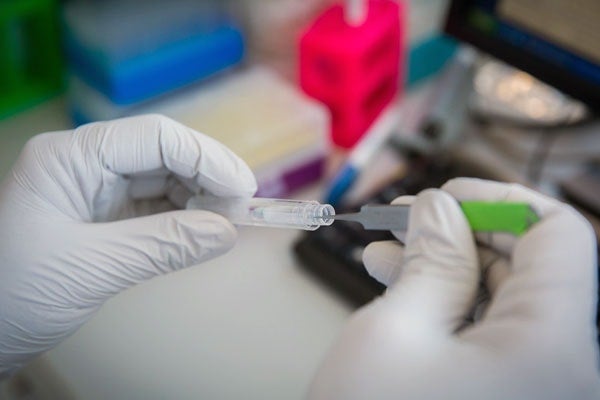
Understanding Medicine by Design
Published: July 28, 2015
The Medicine by Design initiative announced July 28 will establish a leading centre in regenerative medicine at the University of Toronto.
Researchers at the centre will focus on discovering new therapies based on the design and manufacture of molecules, cells, tissues and organs that can be used safely and effectively to treat degenerative diseases.
The result will be a globally and commercially competitive innovation cluster that, in addition to having positive impacts on human health, will also have long-term economic benefits for Canadians by reducing health care costs and seizing new market opportunities for Canadian businesses in regenerative medicine.
Medicine by Design and its resulting centre will help Canada lead the global medical industry and become a major international supplier of regenerative medicine technologies and therapeutics which is expected to grow to $50 billion by 2019. The initiative is made possible by the University of Toronto’s long-standing leadership in this field.
Medicine by Design
Canada has the potential to lead the world in regenerative medical technologies that can have a profound impact on human health. This kind of impact is made possible through Medicine by Design – a new University of Toronto initiative that is supported through the Canada First Research Excellence Fund.
The initiative also represents a significant economic opportunity for Canada. It will incorporate new technologies and scientific strategies into the University of Toronto’s regenerative medicine programs, and develop local capacity for manufacturing rapid lab-to-patient technologies that allows Canada to lead the transformation of the global medical industry and become a major international supplier of regenerative medicine technologies.
Medicine by Design builds on a history of Canadian leadership in regenerative medicine, which started with the discovery of stem cells in 1961 at the University of Toronto. Since the mid-2000s, biomedical engineers at the university have made several significant breakthroughs – from combining living cells with synthetic polymers to creating artificial organs and tissues.
Read Behind the Scenes of Medicine by Design: A Q & A with Molly Shoichet & Peter Zandstra
The initiative is headed by a team of internationally recognized scientific leaders who have access to a network of research centres, infrastructure and experts at the University of Toronto. They will collaborate with colleagues in affiliated hospitals such as: the University Health Network, the Hospital for Sick Children and Mt. Sinai Hospital at regional, national and international academic partners such as the University of Montreal, Western University, the University of British Columbia, the Ontario Institute for Regenerative Medicine, the Ted Rogers Centre for Heart Research, the McEwen Centre for Regenerative Medicine, the Ontario Institute for Cancer Research, CellCAN Regenerative Medicine and Cell Therapy Network, the Canadian Institute for Advanced Research, Sweden’s Karolinska Institute, Germany’s REBIRTH Cluster of Excellence, Peking University, Technion Israel Institute of Technology and the UK Regenerative Medicine Platform; and from organizations focused on advanced manufacturing and commercialization such as the Centre for the Commercialization of Antibodies and Biologics, MaRS Innovation; and, the Centre for Commercialization of Regenerative Medicine, which has an industry consortium of commercial partners, consisting of large multinationals, small-medium enterprises and emerging biotechnology companies.
The Medicine by Design initiative will focus on three pillars:
- Cells by Design will create cells whose fate and function can be controlled to ensure safer and more effective therapies
- Tissues by Design will create complex tissues for use in research, drug-discovery and replacing lost or damaged tissue in humans
- Organs by Design will create and repair organs outside the body and demonstrate how these organs can be successfully transplanted into human patients
The cell-, tissue- and organ-design initiatives will be supported by essential technology platforms, such as genomic engineering to discover biomarkers and cellular control circuits; immune engineering to control the body’s responses to disease and to transplanted cells, organs and tissues; and a program to manufacture stem cells on demand.
The support provided by the fund will allow the University of Toronto and its partners to move from promising discoveries to new and better treatments for Canadians and people around the world.



